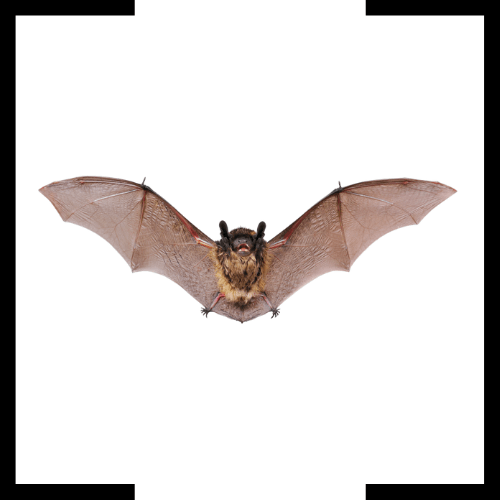In Idaho, our homes and buildings can sometimes become the unwanted homes of bats. While these freaky flyers play an essential role in our ecosystem, having them as uninvited guests in our properties can lead to several issues. Recognizing the need for professional help to manage these situations is crucial for homeowners and property managers alike. Our professional removal services are designed to address these concerns, ensuring safety, legality, and environmental responsibility in every step.
Understanding Bats In Idaho
Idaho is home to several species of these potentially problematic pests, but the Little Brown and the Big Brown are the two most commonly found in urban areas. These species, among others, search for warm places to roost and can often find their way into attics, barns, and other structures.
Naturally, bats prefer to live in caves, mines, trees, and wooded areas. These environments offer them the ideal conditions for roosting, breeding, and feeding. However, as we build more structures and homes, they sometimes find our buildings to be suitable substitutes for their natural habitats.
When they decide to roost in urban areas, they often choose attics, lofts, and abandoned buildings. These places offer warmth and security from predators. However, this cohabitation can lead to several issues for homeowners, which is where our services come into play.
Problems Caused
These nocturnal creatures can pose health risks to humans, the most significant being rabies. Although rabies cases are rare, the potential for transmission is a serious concern. Another health risk comes from their droppings, or guano, which can harbor the fungus responsible for histoplasmosis, a lung disease.
Colonies in buildings can cause significant property damage. Their droppings and urine not only create unpleasant odors but can also damage wood, insulation, and other materials. The accumulation of guano in a confined space can lead to structural issues over time.
The presence of large numbers of them can lead to noise complaints, especially in residential areas. They are most active at night, and their coming and going can disturb the peace. Additionally, the odor from their droppings can become quite strong, especially in large infestations.
Our Removal Process
It's important to note that many bat species are protected under Idaho law, which means their removal must be done in a manner that does not harm them. Our team is well-versed in these regulations, ensuring that our methods are both effective and legally compliant.
We use only approved methods for exclusion, which are designed to safely remove them from properties without harming them. These methods are in line with the legal protections they have, ensuring their safety and the legality of the removal process.
Our process begins with a thorough inspection of the property to identify all potential entry points they may be using. We assess the extent of the infestation, which helps us determine the best course of action for removal. We use effective techniques to exclude bats from properties. This might include installing one-way doors at entry points, which allow the animals to leave but block re-entry. We ensure all our methods are humane and cause no harm to the animals.
After they have been successfully excluded, our team will remove all droppings and contaminated materials safely. We then sanitize the affected areas to eliminate any health risks associated with guano. The final step in our process is to seal all entry points to prevent future infestations. We also provide recommendations to property owners on how to maintain a bat-free environment.
Why Choose Our Services
Our team consists of experienced professionals trained in humane removal. We understand the animals’ behaviors use this knowledge to effectively remove them from properties. We ensure that all our removal methods are in compliance with Idaho wildlife protection laws. This protects our clients from legal issues and ensures the humane treatment of wildlife. Our methods are not only effective in removal of problem wildlife but also in preventing the invaders from returning.
While our primary goal is to remove bats from properties, we also recognize the importance of these creatures to our ecosystem. We are committed to handling bats in a way that respects their role in nature. If you're facing an infestation problem, don't hesitate to reach out to us. Our professional removal services are designed to safely and effectively address your concerns, ensuring peace of mind and a bat-free property. Contact us today for an inspection and let us help you solve your issues with expertise, safety, and legal compliance in mind.
Frequently Asked Bat Questions
Q1. Can bats really see in complete darkness?
A1. Contrary to popular belief, they can see, though not as well as humans during the day. However, they do not rely solely on their vision to navigate in complete darkness. Instead, they use echolocation, a process where they emit high-frequency sounds that bounce off objects and return to them, helping them to "see" their environment through sound. This extraordinary ability allows bats to accurately detect, hunt, and avoid obstacles in total darkness, making them highly effective nocturnal navigators.
Q2. Why do bats hang upside down when they rest?
A2. Bats hang upside down for several reasons, with the primary one being that it gives them an ideal position for takeoff. Unlike birds, bats cannot launch themselves into the air from the ground because of their body structure and the way their wings work. Hanging upside down provides them with the perfect position to drop and catch air under their wings for flight. Additionally, their unique anatomy, including special tendons in their feet, allows them to hang without exerting any energy, making this resting position highly efficient for them.
Q3. Do bats migrate or hibernate during winter?
A3. The behavior of bats during winter can vary significantly between species and geographical locations. Some species do migrate to warmer areas where food (mainly insects) is more plentiful during the colder months. Other species enter a state of hibernation to conserve energy, as the food supply diminishes in winter. During hibernation, they significantly reduce their metabolic rate, lower their body temperature, and slow their breathing and heart rate, allowing them to survive on the fat reserves they built up during the fall. Whether a bat migrates or hibernates can depend on its species, the climate of its habitat, and the availability of food sources throughout the year.


